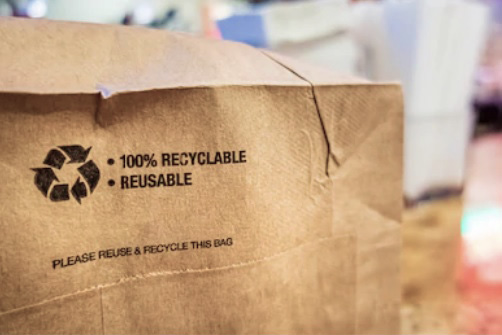
You all know how vital it is to decrease the impact of anti-environment packaging products on the environment. Several businesses are now improvising with new methods of designing and producing their products, trying to lessen their carbon and environmental footprint, while at the same time saving on costs. The idea of cradle-to-cradle, taking responsibility for a product’s effect from the sourcing of the materials to its final disposal is also becoming highly popular.
One of the top culprits when it comes to an industry’s effect is packaging materials and accessories. The cradle to cradle idea needs to take into account the shipping of a product from the manufacturer, retailer, and onto the customer, a process that often involves huge quantities of expensive packaging materials. This has led to a breeze of innovative new eco-friendly alternatives to traditional packaging materials. From recyclable plastics to biodegradable containers, here is seemingly no end to the choices available to the eco-friendly conscious business.
In this article, Mr. Gaurav Jalan, Founder, and Director of Delhi’s leading packaging company Packman Packaging Private Limited talks about 4 eco-friendly packaging alternatives for your business and shipping purposes.
Biodegradable Packaging Peanuts
In some parts of the world recently there is a ban on Styrofoam, the light, airy material used to takeaway cartons and loose-fill packaging. The material from that is made is known as EPS (expanded polystyrene foam). EPS is neither biodegradable nor is it cost-friendly when talking about it being recyclable, often getting its way into waterways where it can have an adverse impact on marine life.
Styrofoam has been a standard in loose-fill packaging for fragile and sensitive items, assisting to avert movement and cushion against shocks. For businesses searching for the closest thing to this packaging classic, biodegradable air peanuts are now present to replace them. These work in the same way as the Styrofoam, but they do not cause pollution in the environment. They are also less expensive.
Corrugated Bubble Wrap
You are all familiar with bubble wrap packaging, that favorite of kids that helps to protect fragile items while shipping. It is not the eco-friendly material, because, being made of plastic. The good news is that a number of options to it are being developed.
One of them is a wrap made of up-cycled corrugated cardboard. Instead of disposing or recycling post-buyer cardboard waste, it gets the opportunity of an additional life as a cushioning material. Small cuts are developed in it to produce a concertina-kind of the effect that secures against shocks just as bubble wrap does. The only problem is that you do not get the satisfaction of popping the bubbles afterward.
Corn Starch Packaging
Corn starch is an organic product that has made in-roads into the eco-friendly packaging industry. Obtained from the corn or maize plant, it has plastic-like qualities, which can be used in several contexts that have traditionally relied upon plastics. From bottles to molded forms and loose-fill packaging, corn starch packaging provides several extra uses.
Recycled Cardboard And Paper
Certainly, all the filler materials need to be formed in something, and cardboard boxes are the industry norms. While cardboard and paper are organic materials, if they are sourced unsustainably, their use may have a drastic effect on the environment.
Fortunately, paper and cardboard are some of the most recyclable resources available. To make sure your packaging is as eco-friendly as possible, try to source post-consumer or post-industrial recycled paper and cardboard.

